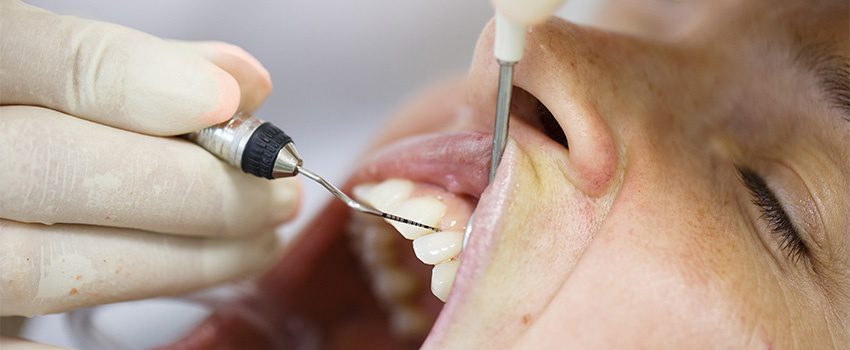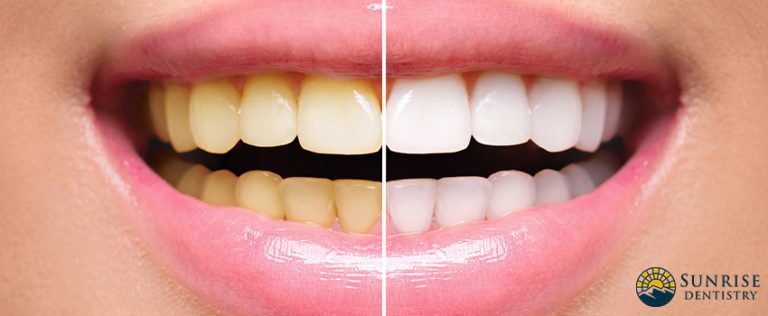While people always focus on their teeth when it comes to oral health, the gums are just as important. Did you know that sensitivity and bad breath can be caused by receding gums? Make yourself aware of the treatment options available, as well as preventive measures to stop a receding gum line and its accompanying symptoms.
What Are Receding Gums?
Gum recession is the process in which the gums draw back from the teeth, exposing their roots. Others refer to this condition as gingival recession. There will be pockets or gaps in between the teeth and the gum line, making it easier for bacteria to thrive.
You will notice that your teeth are starting to get longer. There is sensitivity as well. If left untreated, the supporting tissues and the bones of your teeth will be damaged and may lead to tooth loss.
Do gums grow back? Unfortunately, no. According to experts, once the tissue has pulled away from the teeth, it is gone for good.
What Causes Receding Gums?
To treat and prevent receding gums effectively, you first need to know its cause.
Periodontal Diseases
This is perhaps the most common cause of a receding gum line. Bacterial infections will destroy gum tissues and supporting bone structures that keep your teeth in place.
Genetics
Evidence shows that approximately 30% of the world’s population is susceptible to gum disease, no matter how good their oral hygiene is. It runs in the family!
Hormonal Changes
Women are more prone to gum recession. They experience hormonal changes during puberty, pregnancy, and menopause.
Poor Dental Hygiene
Of course, inadequate cleaning of the teeth and mouth will cause the accumulation of tartar. This hard substance that builds on and between teeth can only be removed by professional cleaning. It may lead to gum recession.
Forceful Brushing
While it is important to brush and floss your teeth regularly, doing it aggressively may cause you more harm. Hard brushing damages the tooth enamel and the gum line, causing a recession.
Grinding or Clenching Teeth
These poor oral habits put too much force on the teeth, causing gums to recede.
Tobacco Products
Are you a smoker? If yes, then you are more likely to have a sticky plaque on your teeth, called tar. This is quite difficult to remove and may cause receding gums.
Receding Gums Treatment Options
The treatment will depend on the underlying cause. The following are your options:
Gum Graft Surgery
This surgical technique stops bone loss and gum recession from worsening. It also protects the previously exposed tooth root from decay. It is a pain-free procedure! Local anesthesia will be administered before the surgery. There are three types of gum grafts – connective tissue graft, pedicle or lateral grafts, and free gingival graft. The treatment of choice will depend on the severity of the case and your needs. You need to see a dentist to discuss each graft and its pros and cons.
Pinhole Surgical Technique (PST)
PST is yet another surgical treatment for receding gums. This involves creating a tiny hole in the gum tissue above the exposed root. The gum will be separated, stretched, and repositioned over the root using a special tool. This is a minimally invasive procedure and is considered to be one of the most advanced and best treatment options to prevent a receding gum line.
In some cases, a non-surgical treatment procedure will suffice. Your dentist can perform or use any of the following:
- Pink porcelain or tooth-colored composite resins can be used to fill the gap between the gums and teeth.
- Desensitizing agents and dentin bonding can help decrease the sensitivity of an exposed root.
- Removable gum veneers made from acrylic or silicone materials are perfect for patients with large areas of missing gum tissue.
- Scaling and root planing are recommended to remove plaque and tartar below the gum line. The roots will then be smoothed using a special instrument to help reattach the tooth and gum.
- Orthodontics can help reposition a tooth back over the gum tissue while correcting the margin.
How Do You Stop Receding Gums?
While the above-mentioned treatment options can definitely stop further recession, you can take preventive measures at home, too! There are several natural remedies that can help you soothe gum recession.
- Eucalyptus Oil: Experts say that eucalyptus oil has an anti-inflammatory property. It helps maintain good oral health and stop gum recession.
- Green Tea: Green tea can be used as a daily mouth rinse to help prevent gum diseases.
- Septilin: Prepared using guduchi, guggul, licorice, and other compounds, this herb mixture can help prevent tooth loss and provides teeth deep cleaning
- Turmeric Gel: This gel, which uses curcumin as its main ingredient, has anti-inflammatory and antioxidant properties. It is extremely effective against plaque formation, which is one of the major causes of a gum recession.
Aside from the above mentioned preventive measures, a regular visit to your dentist can also prevent gum damage with early diagnosis and treatment. If you are looking for a holistic dentist in Durango, CO, visit us at Sunrise Dentistry. We know the key ways to prevent and treat receding gums!





